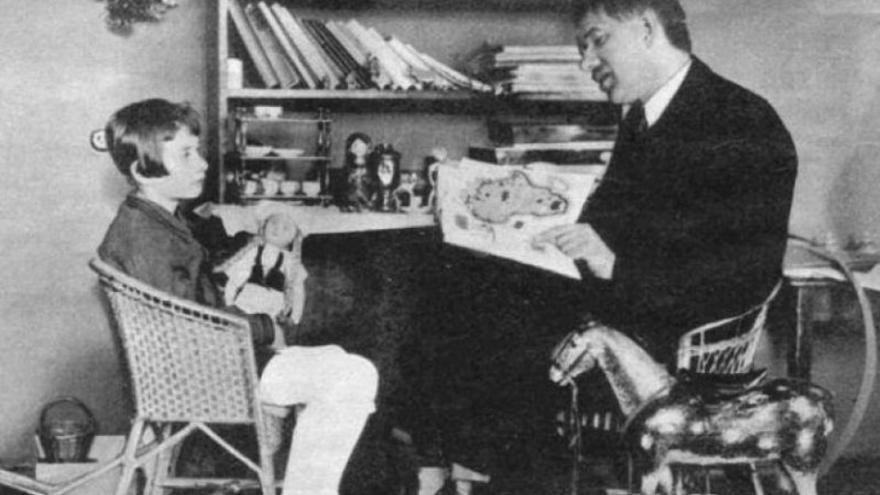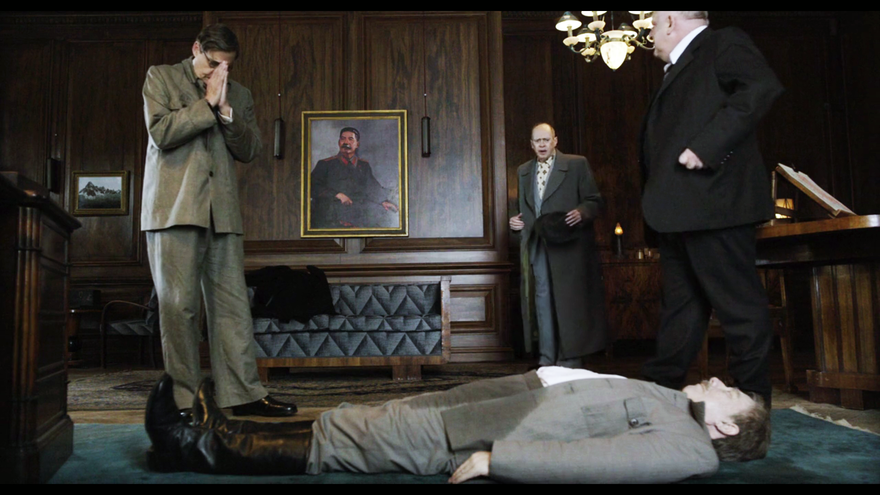
![]() 14ymedio, Daniel Delisau, Las Palmas de Gran Canaria, 15 April 2018 — The life of the Soviet writer Lydia Chukovskaya revolved around a question from 1937: What was the fate of her husband, a reputed physicist, after he was arrested that year in the cruelest moment of the Stalinist purges? As fruits of the pain caused by that question, and that took a long time to resolve, she wrote two novels, Sofia Petrovna, One Exemplary Citizen and Immersion, a Path in the Snow.
14ymedio, Daniel Delisau, Las Palmas de Gran Canaria, 15 April 2018 — The life of the Soviet writer Lydia Chukovskaya revolved around a question from 1937: What was the fate of her husband, a reputed physicist, after he was arrested that year in the cruelest moment of the Stalinist purges? As fruits of the pain caused by that question, and that took a long time to resolve, she wrote two novels, Sofia Petrovna, One Exemplary Citizen and Immersion, a Path in the Snow.
In both works, published for the first time in Spanish in 2014 and 2017 by Errata Naturae, it is easy to guess the markedly autobiographical character of Chukovskaya’s stories. Like her, the protagonists of both novels never saw those they loved most after the mass arrests that took place in the Soviet Union between 1936 and 1938, and that, according to the historian James Harris, in his recent essay The Great Fear, entailed the execution of some 750,000 people for political reasons. continue reading
“What was his last moment like? How did they make him pass from life to death? I don’t even ask myself why. I only ask: how? where? when?” the protagonist reflects in one of the immersions in her memories. Although her husband had been condemned to “ten years in a prison camp without the right to correspondence and the confiscation of possessions,” she has long since assumed he was dead.
Perhaps because of this, when Nina discovers the truth about the fate of her husband, there is no place for an unshackled pain, but rather a stoic acceptance. Biliban, a writer who takes advantage of his leisure to write a commissioned novel faithful to Soviet values, becomes the most important person to the protagonist during these days in the countryside, because for her, above all, he is one of the few messengers “from there,” from the labor camps.
Bilibin had left behind, in the gulag, the tomb of his best friend, and as a result of forced labor he had serious heart disease and a deep knowledge of the penal system. He had never heard of camps where convicts were held “without right of correspondence.” It was simply a euphemism told to the relatives of the prisoners who had been executed shortly after their arrests.
“You aren’t crying?” Bilibin asks Nina, after assuming the death of her husband. “No. If you… and other people… could bear it, it would be unfortunate for me to burst into tears,” she replies, in what is the clearest example of Chukovskaya’s narrative style, in which deep emotions do not overflow in a torrent but are enclosed in the most contained words.
In her works, the Russian writer did not know or wanted to set aside the realistic patina that prevailed in artistic creation during a good part of the Soviet period. Although, paradoxically, Chukovskaya came closer to reality when talking about a subject that the rest of Soviet literature, clearly propaganda, never touched on.
But in Immersion the attachment to reality that the author reflects in the story is contrasted with a desire to transcend literality and elevate the spirit through poetry. Tired of living in a society of hollow and empty words, the work of the poet becomes, for Nina, one of her greatest refuges of freedom.
“As always, reading the newspapers did not offer me anything useful, I was curious, I am forced to read them without getting anything useful, I could browse them, yes, but find out something, never.” The letters were combined into words, words into lines, lines into paragraphs, paragraphs into articles, but nothing was transformed into ideas, into feelings, into images,” thinks Nina, weary of the official press.
Chukovskaya, who in her childhood was entranced with long walks through the woods with verses and stories recited by her father — the children’s literature writer Korney Chukovsky — who wanted Nina to also experience the poetry of authors as important in Russian letters as Pushkin, Nikolay Nekrasov and Alexander Blok.
“There is nothing like the impotence of translation to better reveal that the verses are not only constructed with words, ideas, metric feet and images, but also with time, mood, silence, separation…” the protagonist of Immersion reflects, on translating the verses of a holiday companion, an old Jewish poet who lives with the fear of anti-Semitism unleashed by the purges.
Immersion is a novel very similar to Sofia Petrovna, written shortly after the disappearance and murder of Chukovskaya’s husband, as a first exercise to exorcise the pain and raise her voice even if there was nobody to listen to it. But it is more interesting to observe the differences between the characters in their ways of approaching life.
In Sofia Petrovna it is not a rebellious wife, aware of the lies of the state, who loses her husband in the purges, but a happy mother satisfied with the Soviet model who sees how her son is arrested, an engineer with a promising career ahead. The selfless mother, who stands in endless lines to ask about him in every prison and writes as many inquiries as necessary, will end up losing her mind when she sees no difference between the state propaganda she believes in and the injustice of the arrest and murder of her innocent son.
“If Sofía Petrovna symbolizes the failure of imagination and individual resistance, Nina Sergeievna, the protagonist of Immersion, a character much closer to the author, is capable, on the other hand, of understanding the genuine use of words and relies on writing as a defensive trench before the depraved use of language,” writes Marta Rebón (the translator) and Ferrán Mateo in an endnote.
Throughout her life, Chukovskaya was aware that the way she spoke and wrote conditioned her way of seeing reality and that poetic language was her best shield against the rhetoric that impregnated political and social life in the USSR.
Like Nina, she was also a deeply empathic person who ultimately could not remain quiet in the same way that her literature had been silenced. She ended up being expelled from the Writers Union in 1974 for her public defense of authors such as Andrei Sakharov, Aleksandr Solzhenitsyn and Boris Pasternak.
Today, reading Chukovskaya’s work also awakens in the reader the need to defend herself against dead words through her own literary universe. But the words without a life of their own, to which the writer referred, have been forgotten in all those countries where the communist regimes were replaced by other forms of government. It is now lucid readers who must discern what is the inert language of their own time and of the place in which they have been fated to live.
_____________________
The 14ymedio team is committed to serious journalism that reflects the reality of deep Cuba. Thank you for joining us on this long road. We invite you to continue supporting us, but this time by becoming a member of 14ymedio. Together we can continue to transform journalism in Cuba.



